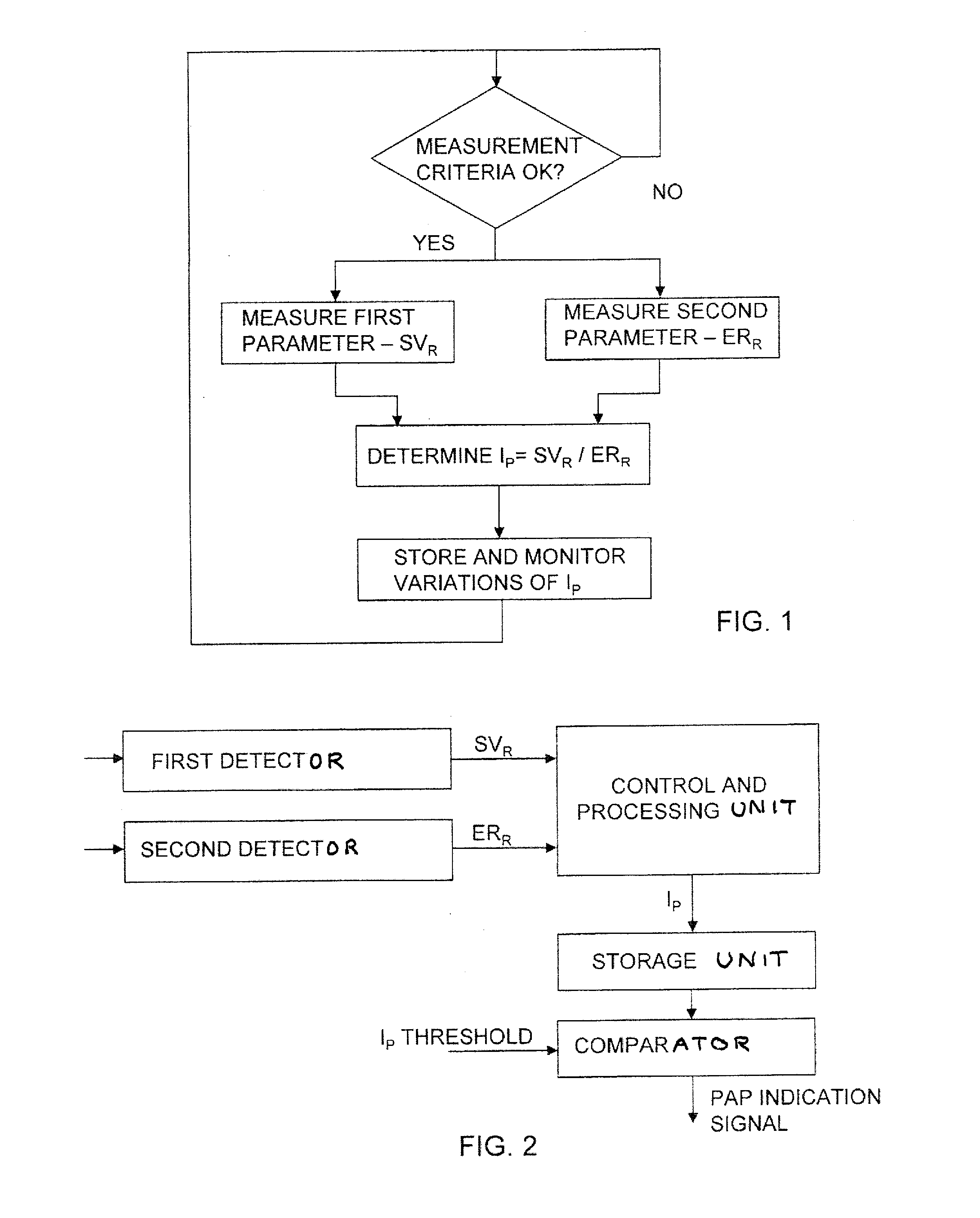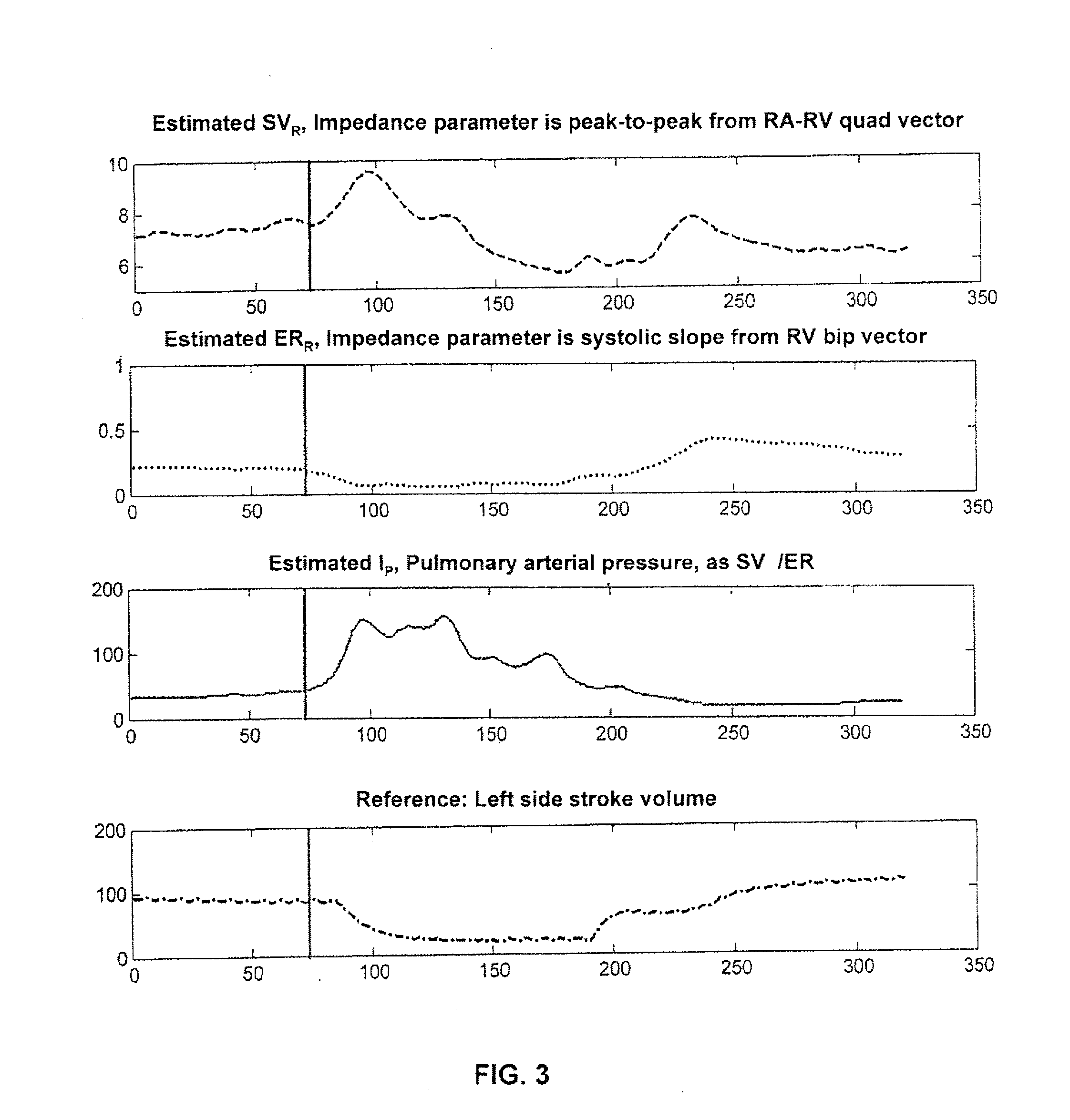Medical device for detecting pulmonary artery pressure
- Summary
- Abstract
- Description
- Claims
- Application Information
AI Technical Summary
Benefits of technology
Problems solved by technology
Method used
Image
Examples
first embodiment
[0051] the pulmonary pressure index is determined by the ratio between the first and the second parameter, where the first parameter is related to the stroke volume of the right ventricle, and the second parameter is related to the ejection rate of the right ventricle.
[0052]Preferably, the first detector is an impedance measurement device adapted to measure the intra cardiac impedance of the right ventricle, and that the first parameter is determined in dependence on the measured impedance. Naturally, alternative measurement methods of determining the right ventricular stroke volume may be used, e.g. by using an intracardiac pressure sensor (see e.g. U.S. Pat. No. 7,024,244).
second embodiment
[0053] the first and second detector are impedance measurement devices adapted to measure the intra cardiac impedance of the right ventricle, and that the first and second parameters are determined in dependence of the measured impedance. It will be further discussed in the following, in relation to FIG. 5, how the ejection rate is determined from an impedance signal.
[0054]As indicated above the second parameter may alternatively instead be related to the current workload (WR) of the heart. In that case the pulmonary pressure index is determined by the product of the first and the second parameter:
IP=SVR×WR
[0055]The workload may be measured by e.g. a strain gauge, a temperature sensor or a contractility sensor.
[0056]According to a preferred embodiment the device is an implantable medical device, and in particular an implantable heart stimulator, e.g. a pacemaker, a cardioverter or a defibrillator.
[0057]FIG. 3 discloses four graphs illustrating different parameters of the present in...
PUM
 Login to View More
Login to View More Abstract
Description
Claims
Application Information
 Login to View More
Login to View More - R&D
- Intellectual Property
- Life Sciences
- Materials
- Tech Scout
- Unparalleled Data Quality
- Higher Quality Content
- 60% Fewer Hallucinations
Browse by: Latest US Patents, China's latest patents, Technical Efficacy Thesaurus, Application Domain, Technology Topic, Popular Technical Reports.
© 2025 PatSnap. All rights reserved.Legal|Privacy policy|Modern Slavery Act Transparency Statement|Sitemap|About US| Contact US: help@patsnap.com



